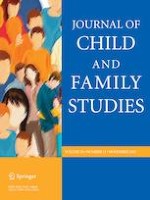18-10-2022 | Original Paper
Competing Influences? How Children’s Adoption and Disability Statuses Relate to Family Structure
Gepubliceerd in: Journal of Child and Family Studies | Uitgave 11/2023
Log in om toegang te krijgenAbstract
Past research indicates that children who are adopted are more likely to live with two married parents than their peers, whereas children with disabilities are less likely to live in this family structure. However, few of these studies employed representative data and none examined how adoption and disability interact in their relationship to family structure. Using 2018 American Community Survey data (n = 3,125,485 children), we employed logistic regression models to predict the odds of a child residing with two married parents based on the child’s adoption status, disability status, and the interaction of the two. Our findings support the view that adoptive parents are a select group. Our interaction term shows that the negative relationship between disability status and living with two married parents was significantly weaker for children who were adopted than those who were not, suggesting that adoption is protective for children with disabilities. We also found, however, that adopted children with disabilities were significantly less likely to live with two married parents than adopted children without disabilities. This finding supports a cumulative stress perspective among parents who adopt children with disabilities. Further supporting cumulative stress theories, we found that adopted children with disabilities (n = 7661) in socioeconomically disadvantaged groups were less likely to reside with two married parents than their counterparts. These findings suggest that while adoptive parents are a select group, there is important heterogeneity among them. Our findings also illuminate the greater need to support families who adopt children with disabilities.
